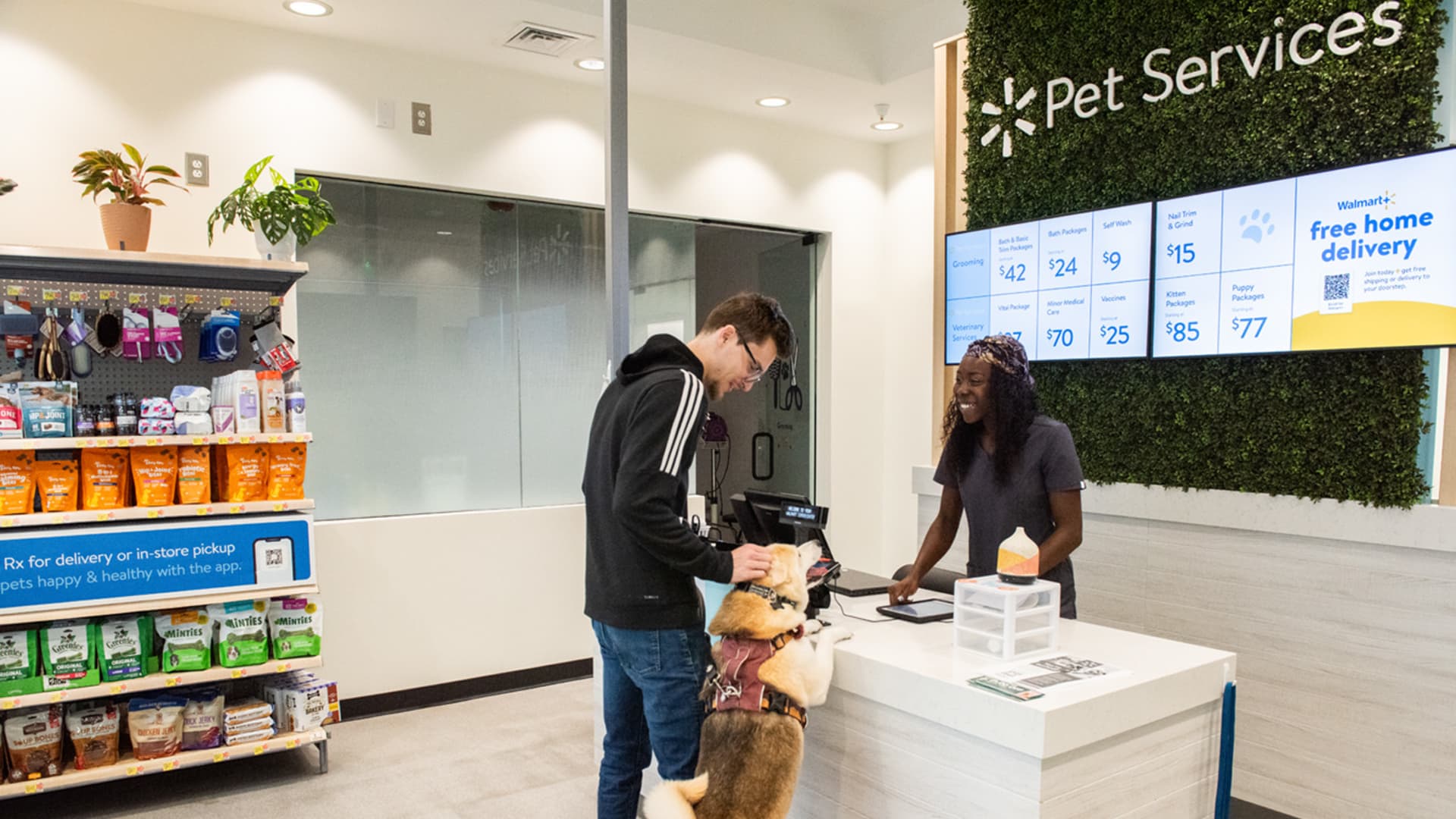Walmart is opening five more pet services centers after testing the first location near Atlanta. The centers offer vet visits and grooming.
Courtesy: Walmart
Walmart shut its doctor offices for people. But the nation’s largest retailer is expanding its pet care business.
On Tuesday, the company announced it will open five more pet services centers in October and early November. The new locations in Arizona and Georgia will include veterinary care and grooming. Walmart opened its first pet services center last year in the Atlanta area.
Walmart’s pet category is an attractive growth opportunity because it drives frequent purchases, resonates with customers across age groups and tends to hold up even when customers’ budgets are stretched, said Kaitlyn Shadiow, vice president of merchandising for pets for Walmart U.S.
Walmart’s pet services centers will have their own dedicated entrance next to a store. They will be under the Walmart name, but staffed by employees of vet care and pet product company PetIQ. The centers will offer routine vet care, such as wellness exams, vaccines and minor medical services, and grooming for cats and dogs.
Shadiow said Walmart decided to expand after seeing strong visits and repeat rates at its first pet services location. About 25% of customers had never shopped at Walmart for pet items before, she said. And when shoppers went to the store for vet or grooming services, Shadiow said it created a “halo effect” that lifted sales for pet food and other supplies, too.
“If you think about pet services, the business case is there,” she said. “We are already serving the needs of so many pet parents today, and it’s a great opportunity for us to help do that in one convenient location or trip.”
Other factors could be motivating Walmart. Chewy and Petco have expanded into pet services as well, with specialty retailer Petco using its stores to become a major vet provider. The services are higher margin than pet food, but are needed more often than other supplies like leashes, pet beds and crates.
Pet ownership spiked during the Covid pandemic, which led to more household spending on dogs, cats and other animals, and a bigger need for vets. Annual household spending on pets is expected to reach $1,445 per animal by 2026 and $1,733 by 2030, according to a recent survey by Morgan Stanley Research. That would represent a 113% jump in total industry spending from $122 billion in 2019 to $261 billion by 2030, the firm found.
Walmart has seen other signs of high demand. A subscription to veterinary telehealth provider Pawp was used more than any other limited-time offer for Walmart+, the retailer’s membership program and answer to Amazon Prime, according to Venessa Yates, senior vice president and general manager of Walmart+. Starting next week, it will turn that limited-time offer into a permanent benefit.
The pet category has also been a way to reach younger and more affluent shoppers, Shadiow said. Gen Z is the fastest-growing segment for Walmart’s pet category, as the group ages into pet ownership, she said. The number of customers shopping the pet category with a household income of over $100,000 grew by 36% year over year, as of the end of July, she said.
Walmart announces new pet service locations, online vet access and prescription delivery.
Courtesy: Walmart
Walmart announced earlier this year that it would close all of its 51 health-care clinics for people — a sharp turnabout for the company, which it pinned on “the challenging reimbursement environment and escalating operating costs.” The clinics offered lower-priced doctor visits, dentist appointments and therapy sessions.
Walmart also closed its human telehealth provider, which it had acquired for an undisclosed amount in 2021. It has tested the pet services concept in Dallas, Georgia, where it opened its first health clinic for people in 2019.
Yet Shadiow said pet care is a simpler and more profitable business. Fewer people pay for pet care through insurance and the centers themselves can be smaller, she said. People want transparent pricing since they often pay out of pocket. Plus, she said, Walmart is a one-stop shop for customers who need related products, such as pet prescriptions or food.
“We feel a lot more confident in the ability for this to be successful over the long term,” she said.
— CNBC’s Gabrielle Fonrouge contributed to this report.















